PALAVRIKAS DE
AMOR
Judeo-Spanish music and songs
|
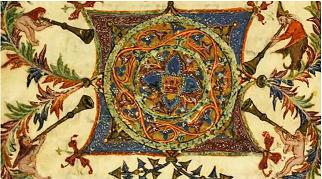
|
Anne-Claire
MONNIER:
vocals
Michel BORZYKOWSKI:
saxophones, vocals...
Bianca FAVEZ :
violin
Pier-Yves 'Yoyvl' TETU :
accordion
Frederic BERNEY :
double bass
David MORHAIN :
percussion
|
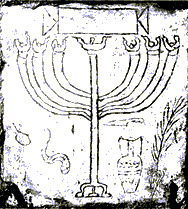 |
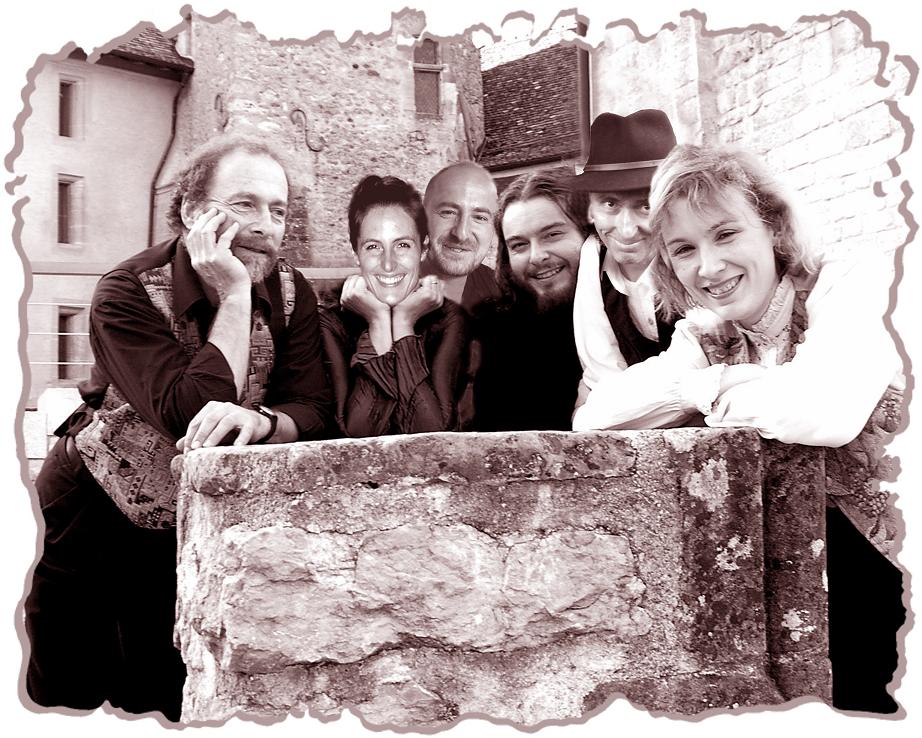
After their expulsion from
Spain in 1492, the Sephardic Jews, enriched with the ancient traditions of Al Andaluz,
will scatter and influence the cultural life of the entire Mediterranean basin,
particularly in cities such as Tetouan, Fez, Salonica, Izmir, Istanbul and Sarajevo.
Part of the immense cultural heritage of the Jews, Sephardic songs and music are heavily
steeped in indigenous folk music. If tradition extends back to Spain from the 15th
century, musical creativity is the result of a recent artistic mixing. So many places, so
many music and poems, inscribed in memories. Their only commonality is their eclecticism,
their charm and their ability to evoke all the emotions.
Forsaking -for a short period- their beloved KLEZMER music and Yiddish language,
HOTEGEZUGT and Anne-Claire MONNIER are pleased to present their new program of
Judeo-Spanish instrumental music and songs which perpetuates the tradition without
freezing it...

Judeo-Spanish
music and songs
The tradition of Jewish liturgical chant dates back to Biblical era. But the profane
Jewish singing acquired its breadth and diversity in the Diaspora, through the cultural
and musical influence of the various cultures with which the Jewish communities were
-willingly or by force- in contact. Just as poetry, Sephardic music remained the
privileged witness of the strange adventure of the Jews from the Iberian Peninsula who
successively underwent tolerance, success, persecution and deportation. In spite of
dispersion and acculturation, Jews have preserved their language and specific cultural
values.
Sepharad is a Hebrew word meaning ‘Spain’. Sfaradim
refers to the descendants of the Jews from the Iberian Peninsula. At the time of Islamic
rule over Spain (from 8th to mid 13th century), a large Jewish
community lived there. Apart from short times of persecution and forced conversions, Jews
were economically useful and, tolerated as such, they participated -together with Muslims
and Christians- to a real scientific and cultural symbiosis, from which emanated great
names like Maimonides, Averroes or Alfonso the Wise. The 12th century can be
considered as a "golden age", as Jewish communities depended only on the king
and had a large administrative and judicial autonomy. Each center of the Spanish Judaism,
particularly in Andalusia (Cordoba, Granada, Malaga, Sevilla, Toledo, etc.) had his own
poetic style and its specific musical tradition.
|
In the mid-14th century, the charge of spreading the plague and
the political disorders overcame this tolerance. The reconquest of Spain by the Catholics
and the obligation for Jews to convert ended seven centuries of harmonious coexistence of
the three religions. The Inquisition, established in the mid-15th century,
accused many ‘conversos’ (converts, contemptuously nicknamed ‘Marranos’,
pigs) of practicing secretly their old religion.
On March 30, 1492, less than three
months after the surrender of the Moors, the Catholic monarchs Ferdinando and Isabella
promulgated an edict, leaving only four months for unconverted Jews to leave the kingdom
without taking any property. Most of them took refuge in the Ottoman Empire (Salonica,
Smyrna, Rhodes, Constantinople, Adrianople, Bosnia, Serbia, Romania and Macedonia), but
also in North Africa (Tetouan, Tangiers), in southern Italy, France (Marseilles, Bordeaux)
and in northern Europe (Amsterdam).
|
|
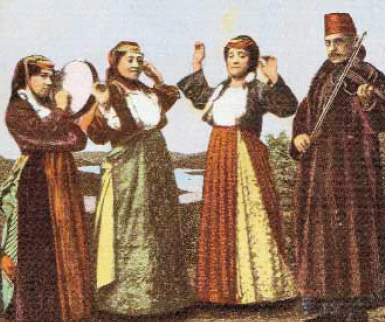 |
The Inquisition, established in the mid-15th century, accused many ‘conversos’
(converts, contemptuously nicknamed ‘Marranos’, pigs) of practicing secretly
their old religion and never ceased to prosecute them.
Failing their property, the expelled took with them their cultural heritage, their
language, their songs and stories, a major source of spiritual enrichment, which were
transmitted, particularly by women, from generation to generation.
For five centuries they preserved their language, the Judeo-Spanish (also
called, spaniol, spanioliko, djidio, djudesmo or khaketia
in Morocco, yahudice in Turkey or ladino), a medieval Spanish
enriched with Hebrew words (like Yiddish but to a lesser extent), and subsequently with
many words borrowed from the languages of the cultures of residence (Turkish, Greek,
Arabic, French).
The Judeo-Spanish songs have undergone a similar destiny. As countless
Jewish writings were destroyed by order of the Church, it is now impossible to know
exactly what the Judeo-Spanish music sounded like in the 14th century. If some
texts and lyrics date back to the Middle Ages and Renaissance (and are used today
for research on medieval Spanish literature!), most of them are newer, having even been
borrowed from the cultures of the host countries or, through travelers, from modern Spain.
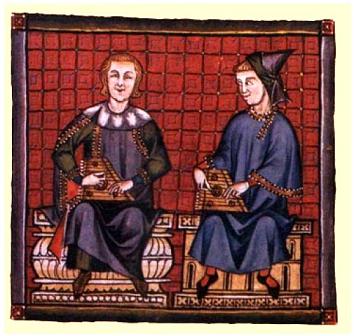 |
The melodies of these songs adopted the musical patterns of hosting
cultures, in spite of to widespread idea, relating them straight to medieval Spain! Thus
the musical style used in the Eastern Jewish Communities (former Ottoman Empire, Balkans,
East of the Mediterranean Sea) diverged from this of the Mughrabi Jews.
What
can be nowadays classified under ‘Judeo-Spanish songs’ is mainly the
result of a ‘musical syncretism’ or a ‘creative incorporation’
of ancient and modern Judeo-Spanish texts with a mainly eastern music. This geographical
and cultural complexity distinguishes musically the Sephardic Jews from the Ashkenazi,
more homogeneous in its often closed and hostile East European environment and which were
not spread widely until the late 19th century.
|
Formerly, as liturgical chants in Hebrew, Aramaic or Judeo-Spanish were
mainly sung by men, the women used to sing privately ballads and romances,
a cappella or accompanied by a percussion (except on Shabbat or 'yom tov' ! The songs were
adapted to various circumstances of life: birth, rocking, bar-mitzvah, shared or
disappointed love, wedding, family matters, separation, death... or related to the
calendar: Shabbat songs, coplas of Purim, lamentations for Tisha
be'av, par-liturgical piyutim, etc. In addition to
this mix of sacred and secular themes, one can find lyrical poems, themes out of the real
life (i.e. the big fire in Salonika in 1917), parodies, satires and
even bawdy songs.

Expressing a wide range of feelings and emotions -ranging from the noblest and
the most heroic to the most tragic and vulgar-, their concise and -at first sight- simple
style contains lots of allusions and implicit formulations, whose understanding requires
listener’s active participation. This constantly enriched directory enabled and still
allows Sephardic Jews to affirm their culture: Jewish and Spanish.
In the 20th century, the oral transmission of traditional Judeo-Spanish
songs was brutally interrupted by the destruction of important Sephardic communities
during the Holocaust, but, like Yiddish songs and klezmer music, this legacy raises since
the 1970s a renewed interest all around the world. The advent of recordings and the
concept of ‘concert’ have led to new interpretations (Baroque, Flamenco...),
often by male and sometimes accompanied by modern instruments (guitar, tablas…),
sometimes without any direct link to the tradition. But their artistic quality and their
emotional potential are worth our attention...
Michel Borzykowski


last update: 2011, January 30







